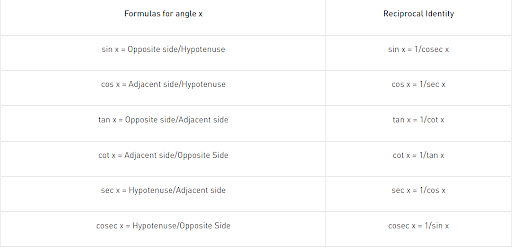Question:
Value of $1+cos56^{\circ}+cos58^{\circ}-cos66^{\circ}$ is
Value of $1+cos56^{\circ}+cos58^{\circ}-cos66^{\circ}$ is
Updated On: Jun 18, 2022
- $2sin28^{\circ}\,cos29^{\circ}\,sin33^{\circ}$
- $4cos28^{\circ}\,sin29^{\circ}\,sin33^{\circ}$
- $4cos28^{\circ}\,cos29^{\circ}\,cos33^{\circ}$
- $2cos28^{\circ}\,sin29^{\circ}\,sin33^{\circ}$
Hide Solution
Verified By Collegedunia
The Correct Option is B
Solution and Explanation
Answer (b) $4cos28^{\circ}\,sin29^{\circ}\,sin33^{\circ}$
Was this answer helpful?
0
0
Top Questions on Trigonometric Functions
- Solve for \( x \), \[ 2 \tan^{-1} x + \sin^{-1} \left( \frac{2x}{1 + x^2} \right) = 4\sqrt{3} \]
- CBSE CLASS XII - 2025
- Mathematics
- Trigonometric Functions
- Evaluate: $ \tan^{-1} \left[ 2 \sin \left( 2 \cos^{-1} \frac{\sqrt{3}}{2} \right) \right]$
- CBSE CLASS XII - 2025
- Mathematics
- Trigonometric Functions
- The graph of a trigonometric function is as shown. Which of the following will represent the graph of its inverse?

- CBSE CLASS XII - 2025
- Mathematics
- Trigonometric Functions
- The integral \[ \int_0^\pi \frac{8x}{4\cos^2 x + \sin^2 x} \, dx \text{ is equal to:} \]
- JEE Main - 2025
- Mathematics
- Trigonometric Functions
- The value of \( \cos \left( \sin^{-1} \left(-\frac{3}{5}\right) + \sin^{-1} \left(\frac{5}{13}\right) + \sin^{-1} \left(-\frac{33}{65}\right) \right) \) is:
- JEE Main - 2025
- Mathematics
- Trigonometric Functions
View More Questions
Questions Asked in OJEE exam
- If the speed of sound in air at 0°C is 331 m/s, the speed of sound in air at 35°C is:
- Fog is a solution of:
- OJEE - 2024
- Colloids
- Calculate the number density of free carriers in silver, assuming that each atom contributes one carrier. The density of silver is \( 10.5 \times 10^3 \, \text{kg/m}^3 \) and the atomic weight is 107.8.
- OJEE - 2024
- mechanical properties of solids
- A battery of 10 V and internal resistance 0.5 Ω is connected in parallel with a battery of 12 V and internal resistance 0.8 Ω. The terminals are connected by an external resistance of 20 Ω. The current flowing through the 20 Ω resistance is:
- OJEE - 2024
- LCR Circuit
- A coil has resistance 20 Ω and inductance 0.35 H. Compute its impedance to an alternating current of 25 cycles/s.
- OJEE - 2024
- LCR Circuit
View More Questions
Concepts Used:
Trigonometric Functions
The relationship between the sides and angles of a right-angle triangle is described by trigonometry functions, sometimes known as circular functions. These trigonometric functions derive the relationship between the angles and sides of a triangle. In trigonometry, there are three primary functions of sine (sin), cosine (cos), tangent (tan). The other three main functions can be derived from the primary functions as cotangent (cot), secant (sec), and cosecant (cosec).
Six Basic Trigonometric Functions:
- Sine Function: The ratio between the length of the opposite side of the triangle to the length of the hypotenuse of the triangle.
sin x = a/h
- Cosine Function: The ratio between the length of the adjacent side of the triangle to the length of the hypotenuse of the triangle.
cos x = b/h
- Tangent Function: The ratio between the length of the opposite side of the triangle to the adjacent side length.
tan x = a/b
Tan x can also be represented as sin x/cos x
- Secant Function: The reciprocal of the cosine function.
sec x = 1/cosx = h/b
- Cosecant Function: The reciprocal of the sine function.
cosec x = 1/sinx = h/a
- Cotangent Function: The reciprocal of the tangent function.
cot x = 1/tan x = b/a
Formulas of Trigonometric Functions:
